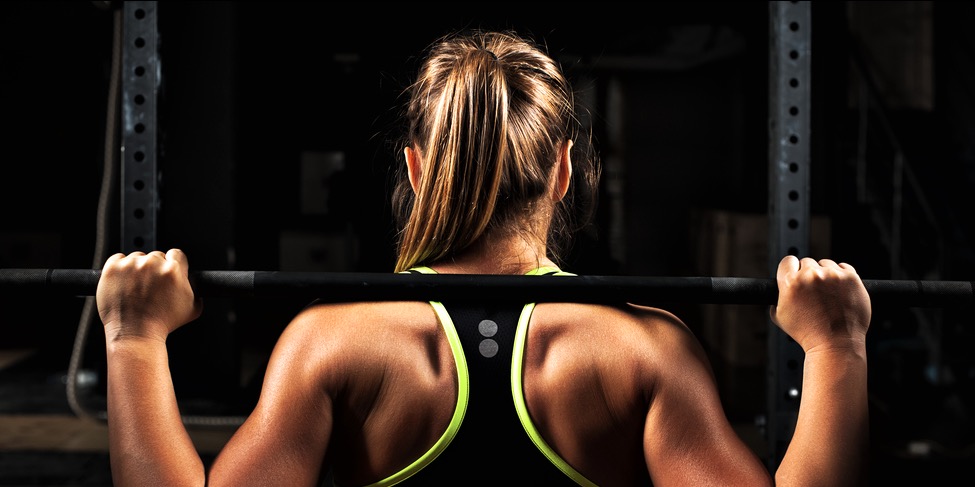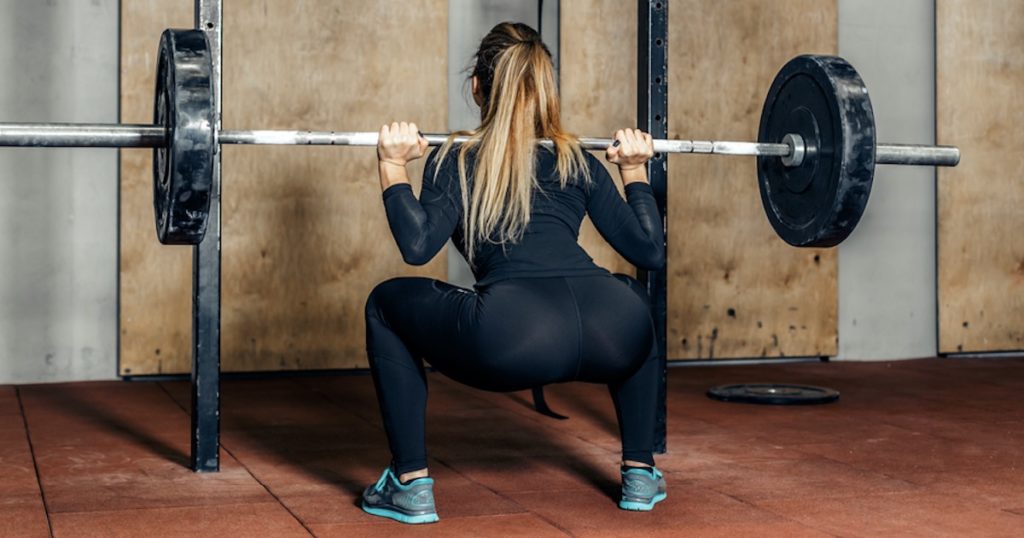The back squat and hip thrust are both popular lower body training options for lifters on the quest of building strong legs, hips, glutes, and quads. There’s been a fair amount of research published on the two when directly comparing one another, especially when investigating which could be better for overall glute, leg, and strength growth.
In a recent study published in the International Journal of Sports Medicine, authors sought to explore the differences between 1-RM strength and muscle thickness using the back squat and hip thrust in well-trained women. (1)
This study is interesting because they focused on well-trained women as their prime demographic, which is an understudied population. To further that point, it’s also great to see this population studied because the suggestions made in the discussion of this research are slightly more applicable to advanced lifters who might be reading this article looking for programming suggestions compared to if the study looked at untrained participants.

The Participants and Structure
For this study, authors had 24 volunteers partake and they were split into two groups: a back squat and a hip thrust group, and each group had 12 participants. The back squat group had roughly 4.8 +/- 0.8 years of training experience and the hip thrust group had about 5.1 +/- 0.7 years of training experience.
Prior to the exercise intervention, participants had their back squat and hip thrust 1-RMs tested, along with having their quadriceps and gluteus muscle thickness measured with the use of an ultrasound. These tests were also carried out following the 12-week exercise intervention.
Each group performed 12-weeks of resistance training and followed a non-linear periodization model. Every week, participants performed either six sets of back squats or hip thrusts to momentary failure depending on the group they were delegated to. The weekly training that is referenced in the research for the 12-week exercise intervention was as follows:
- Weeks 1, 5, and 9, participants performed 12–15 repetitions with 30–60 s of rest between sets.
- Weeks 2, 6 and 10, participants performed 4–6 repetitions with inter-set intervals of 3–4min.
- Weeks 3, 7 and 11, training involved 10–12 repetitions with 1–2 min of rest between sets.
- Weeks 4, 8 and 12, 6–8 repetitions were performed with 2–3min of rest between sets.

The Results and Suggestions
Following the 12-week exercise intervention, researchers suggested a few takeaways that they noticed between the groups. The back squat, a multi-joint exercise, improved 1-RM back squat and hip thrust strength following the intervention, while the hip thrust, single-joint exercise, only saw noticeable improvements in hip thrust 1-RM strength.
In terms of muscle thickness, both groups improved quad and gluteus thickness post-exercise, but the back squat group saw significantly more quad growth compared to the hip thrust group.
The authors made a few suggestions as to why this could be, and the first suggestion focuses on the specificity of the exercises being performed. The back squat is a multi-joint exercise and the quads and glutes are both prime movers for successful execution, so it makes sense that they both grew and got stronger following the intervention.
The hip thrust is single-joint exercise that focuses pretty much exclusively on hip extension through a horizontal loading pattern, so improving hip thrust strength makes sense. And yes, it’s a movement that activates the quads to a degree, but it doesn’t take them through a range of motion that would elicit a strong knee extension, so the lack of quad growth and carryover to squat 1-RM strength also makes sense (the back squat is vertically loaded).
Practical Takeaways
If we look at the movement patterns of the back squat and hip thrust, the increases in muscle thickness and 1-RM strength pre and post exercise intervention make sense. And to take the suggestions a step further, we could also consider effort into the equation. Since this population has more training experience, then pushing the back squat to momentary failure each week could elicit more effort than pushing the hip thrust to failure.
That’s not to say that one always takes more effort than the other, however, moving through a greater range of motion with weight is generally harder to execute — so it’s something to consider. As a coach, I’m thinking about how this above logic of effort could translate to other movements, so the effort to execute something like a bicep curl versus a weighted chin-up would be vastly different.
From this research, I think there are three cool things to consider for programming:
- Specificity of movement patterns matter — especially multi-joint movements — and practicing the skill of a compound exercise and how it’s loaded is important for success and growth in that movement.
- The hip thrust and back squat both require hip extension, but that doesn’t mean one will always have the same carryover to the other. The way the body is loading to execute hip extension in each of these exercises should be considered and just because a movement trains hip extension doesn’t mean it will improve hip extension all of the time in other movements from a strength standpoint — see point one.
- Use both. Instead of writing off one as being useless due to lack of specific carryover, implementation of both could be incredibly powerful. For example, improving the back squat, while implementing the hip thrust for specific, single-joint accessory work could be a great way to check all the boxes when it comes to strengthening and growing the quads and glutes.
Hopefully as 2020 progresses we continue to see more research look at study populations that are a bit more applicable to dedicated lifters and strength athletes. This was an awesome study, but it’s worth remembering that it’s just one piece of research to tie into your experiential evidence to make the best programming suggestions possible.